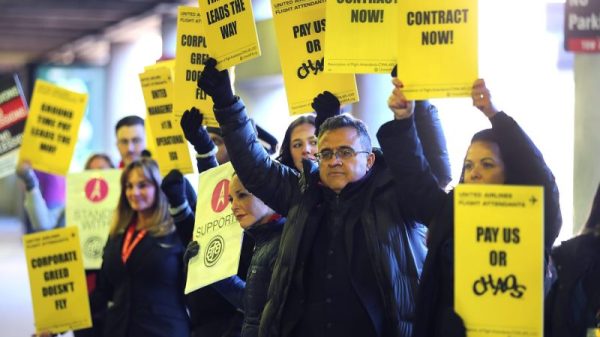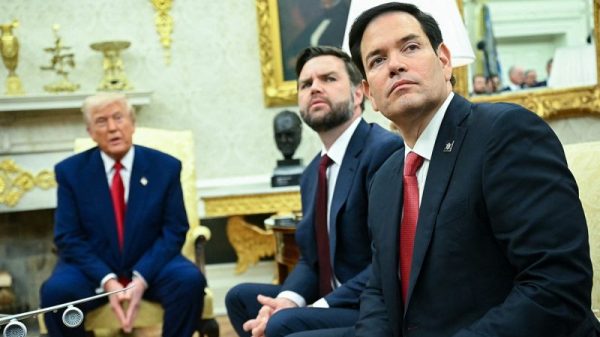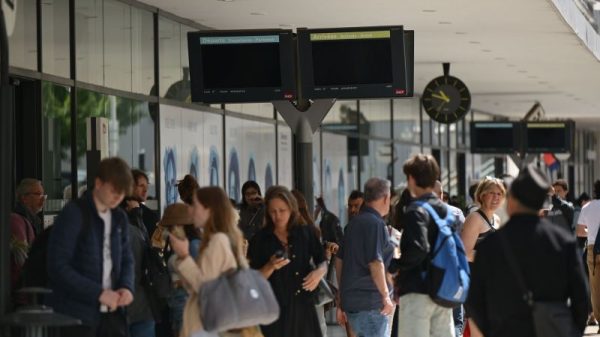Upon learning of former president Donald Trump’s most recent indictment last week, Florida Gov. Ron DeSantis had a novel take: “Americans,” he tweeted, should “have the right to remove cases from Washington, D.C.” On Fox News, he added, “It is unfair to have to stand trial before a jury that is reflective of the ‘swamp mentality.’”
Soon, Trump and his lawyers were in on the action, arguing on social media and Sunday shows that he could not receive a fair trial in the nation’s capital.
Thus opens a new chapter in the long saga of lawmakers treating residents of the District of Columbia as if they aren’t Americans — a history as intertwined with race as with partisanship.
“What I think [DeSantis is] doing in this instance is a very age-old trick of conflating the federal government with the people of D.C.,” George D. Musgrove, a historian and co-author of the book “Chocolate City: A History of Race and Democracy in the Nation’s Capital,” said in an interview. “If ‘the Swamp’ is anything concrete … it’s this notion of federal policymakers, the federal bureaucracy, lobbyists, the people that run the federal government. Then there’s the actual 690,000 residents of the District of Columbia,” who are more likely to be middle and working class, like “teachers and bus drivers.”
Musgrove, a professor at the University of Maryland at Baltimore County, noted that a significant number of lobbyists and federal workers live in the Virginia and Maryland suburbs and that residents of the District are often “at odds” with the federal government.
“People like Ron DeSantis know that they’re two different groups of people,” Musgrove said, noting that DeSantis was a member of Congress and has an undergraduate degree from Yale’s storied history department. “But they decide to conflate the two because it works well for the narrative that they’re pushing.”
The federal district was created in Article I of the Constitution, allowing Congress to “exercise exclusive Legislation in all Cases whatsoever, over such District.” In Federalist Paper No. 43, James Madison argued this was necessary so that no single state could “insult” or “interrupt” — that is, unduly influence — lawmakers by mere proximity. (This, of course, was back in the day when lawmakers made fewer trips to their home states and couldn’t know their constituents’ views by checking the phone in their pocket.) A few sentences later, Madison adds that District residents will still have “their voice in the election of the government which is to exercise authority over them; as a municipal legislature for local purposes, derived from their own suffrages, will of course be allowed them.”
That’s not what happened. The Organic Act of 1801 gave Congress power over the District and stripped residents of the right to vote in nearly all elections. Georgetown and Alexandria were allowed to maintain local governments, but the burgeoning “Washington City,” as it was called then, was not.
“They raise a stink immediately,” Musgrove said. “And the next year, in 1802, Congress grants the people of Washington City a sort of hybrid, part-appointed, part-elected government. The amount of voter input in the selection of that government slowly expands until the point where you have an elected mayor and council.”
Some District residents continued to chafe at these limits, and in 1846, half the District retroceded back into Virginia, partly to prevent the federal government from abolishing slavery in Alexandria, a major port in the domestic slave trade at the time.
Then came the Civil War and Reconstruction. In 1867, the Radical Republican-controlled Congress overrode President Andrew Johnson’s veto to give Black men in the District the same voting rights as White men, three years before the ratification of the 15th Amendment. By that point, the Black population of the District had risen to one-third, because of its emancipation order five years earlier and the migration of self-emancipated people and Civil War veterans. African Americans were soon elected to the local government, Musgrove said.
But as lawmakers from former Confederate states trickled back into town, Congress clamped down again on the rights of District residents, stripping them of the little power they had over local government and handing it to the president. As the D.C. Attorney General’s office noted in 2019, Sen. John Tyler Morgan of Alabama, a former Confederate, said Congress decided “to burn down the barn to get rid of the rats … the rats being the Negro population and the barn being the government of the District of Columbia.” D.C. residents’ rights remained this way for nearly a century.
But the lack of control also made it an interesting “testing ground” for the federal government in the 20th century, Musgrove said, where it ended segregation of the federal workforce and racist housing covenants there before taking those efforts national.
“In effect, the civil rights movement is over in the District by 1954,” he said, a full decade before the passage of the Civil Rights Act of 1964. And by 1957, D.C. became the first major city to have a Black majority, a combination of White flight and Black migration.
“A lot of [White] people just wanted the niceties of the suburbs: a lawn, better schools, more space. But a huge number of those people left because they feared integration in the District,” Musgrove said. “At the same time, African Americans are moving to the area in increasing numbers, and they don’t have the choice of going to the suburbs, which are still segregated. So, they have to move into the city.”
District residents got the right to vote for president in 1961, a push that had bipartisan support. This was smack-dab in the middle of 20th-century party realignment, when Democrats became the more liberal party and Republicans the more conservative one, and Black voters slowly switched affiliation from the latter to the former.
By the 1970s, when the party realignment was nearly complete, three-quarters of the District population was Black. In 1973, the Home Rule Act reestablished a local government with a mayor and council elected by residents. But some lawmakers who opposed the legislation made racist arguments, such as a Louisiana congressman worried the city would come under the “control” of Black Muslims.
Today in the District, Democrats make up nearly 77 percent of registered voters, and Republicans just 5 percent, according to recent data from the D.C. Board of Elections. The city no longer has a Black majority, though African Americans still make up 45 percent of the population, and all of its elected mayors since 1975 have been African American. Residents have a representative in the House, Eleanor Holmes Norton, though she is not allowed to vote. Congress still controls the city’s budget, which has blocked the District from taxing and regulating marijuana sales despite local voters’ overwhelming support.
This is why race and partisanship cannot be decoupled when talking about the push for D.C. statehood today, Musgrove said. “Republicans have become deeply hostile to the district’s right to self-determination,” he said, and now “that even filters down into a hostility to District juries if, in fact, some of their members are under indictment.”
So, are DeSantis and Trump’s “othering” of the Washington jury pool a racist dog whistle, pure partisanship or something else?
“I think this is probably more of a partisan attack. But again, I just don’t think you can separate [race and partisanship], for the same reason that Trump was focused on Detroit and Fulton County, [Ga.], in the last election, where he alleged fraud,” Musgrove said.
“The District is always this irresistible target for anyone that wants to identify a scapegoat without very much blowback. You can punch down to the District and nobody can punch back at you,” Musgrove said. “That’s just the nature of the relationship.”







































